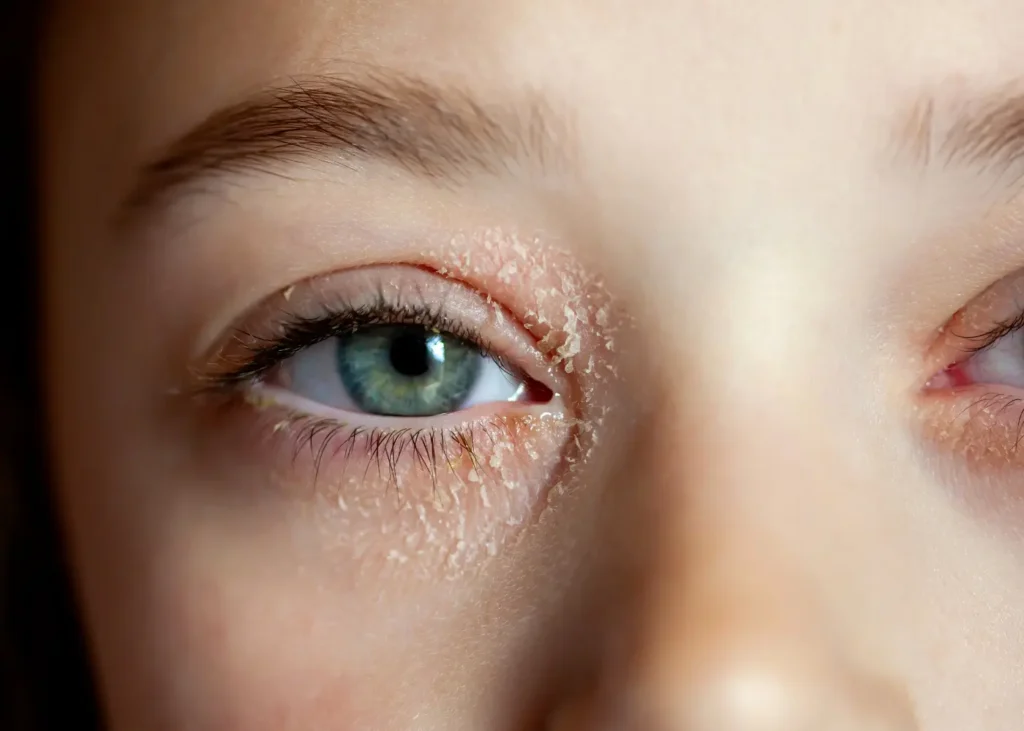OCULAR SURFACE DISEASE
As a fellowship-trained Ocular Surface and Cornea Surgeon, Dr. Jayadatt Patel offers expert care in treating keratoconus, corneal infections, dystrophies, and ocular surface disorders

What is Ocular Surface Disease (OSD)?
Ocular Surface Disease (OSD) is a collective term for conditions affecting the front surface of the eye, primarily the cornea and conjunctiva. These disorders can cause chronic discomfort, visual disturbances, and, in severe cases, corneal damage.
Typical Causes
Several factors can contribute to cataract development, including:
Advance Causes
Stevens-Johnson Syndrome (SJS)
A severe allergic reaction affects the skin and mucous membranes and causes extensive ocular damage.
Chemical Injuries
Exposure to acids, alkalis, or toxic substances can cause corneal scarring and severe dry eye.
Ocular Cicatricial Pemphigoid (OCP)
A rare autoimmune disease causing progressive conjunctival scarring and vision loss.
Ocular surface squamous neoplasia
A spectrum of pre-cancerous and cancerous lesions affecting the ocular surface.
When to See Us
We provide the most benifical solution for yours eyes
Available Treatments
Artificial Tears
Lubricating eye drops help maintain tear film stability.
Punctal Occlusion
Blocking tear drainage ducts helps retain moisture.
Eyelid Hygiene Practices
Warm compresses and lid scrubs help manage blepharitis.
LipiFlow Therapy
Uses heat and massage to improve Meibomian gland function.
Advanced Treatment Options
Simple Limbal Epithelial Transplantation
Used in limbal stem cell deficiency, replacing damaged corneal cells.
Mucous Membrane
Grafting
Harvests tissue from the oral or nasal mucosa to repair conjunctival defects.
Amniotic Membrane Transplant
Biologic tissue graft that promotes healing and reduces inflammation.

Prevention Tips
- Take frequent breaks from screen time
- Avoid smoke and other irritants
- Use artificial tears regularly
- Practice good eyelid hygiene
- Schedule regular eye exams
FAQs
Can Ocular Surface Disease (OSD) be cured?
OSD is a chronic condition, but with proper treatment, symptoms can be managed effectively. Early diagnosis and consistent care can prevent complications.
How do I know if I have OSD or just occasional dry eyes?
Occasional dryness can be caused by environmental factors, but persistent symptoms such as irritation, burning, redness, and blurry vision may indicate OSD. An eye examination, including tear film analysis, can confirm the diagnosis.
Can OSD lead to permanent vision loss?
Severe OSD, if left untreated, can lead to corneal damage, scarring, or infections, which may cause vision impairment. However, timely treatment can prevent serious complications.
Does excessive screen time worsen OSD?
Yes. Prolonged screen exposure reduces blink rate, leading to increased tear evaporation and worsening dry eye symptoms. Taking breaks and using lubricating drops can help.
What is the role of diet in managing OSD?
A diet rich in omega-3 fatty acids (found in fish, flaxseeds, and walnuts) can help improve tear quality. Staying hydrated and avoiding excessive caffeine or alcohol also supports eye health.
Is OSD more common in certain age groups?
Yes, OSD is more common in older adults, especially postmenopausal women due to hormonal changes. However, younger individuals with high screen exposure are also increasingly affected.
Can contact lenses worsen OSD?
Yes, long-term use of contact lenses can disrupt the tear film and cause dryness. Daily disposable lenses or scleral lenses (for severe cases) may be better options for OSD patients.
How effective are artificial tears in treating OSD?
Artificial tears provide temporary relief but do not treat the underlying cause. Patients with moderate to severe OSD may need advanced treatments like LipiFlow®, punctal occlusion, or prescription eye drops.
What is the difference between evaporative dry eye and aqueous-deficient dry eye?
Evaporative Dry Eye: Caused by Meibomian gland dysfunction (MGD), leading to rapid tear evaporation.
Aqueous-Deficient Dry Eye: This is due to insufficient tear production from the lacrimal glands.
How can I prevent OSD from worsening?
Maintain a humidified environment, follow proper eyelid hygiene, take regular screen breaks, use preservative-free artificial tears, and get regular eye check-ups.
Schedule Regular Eye Exams
Early detection and management can prevent complications.
